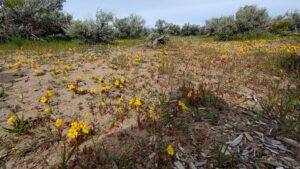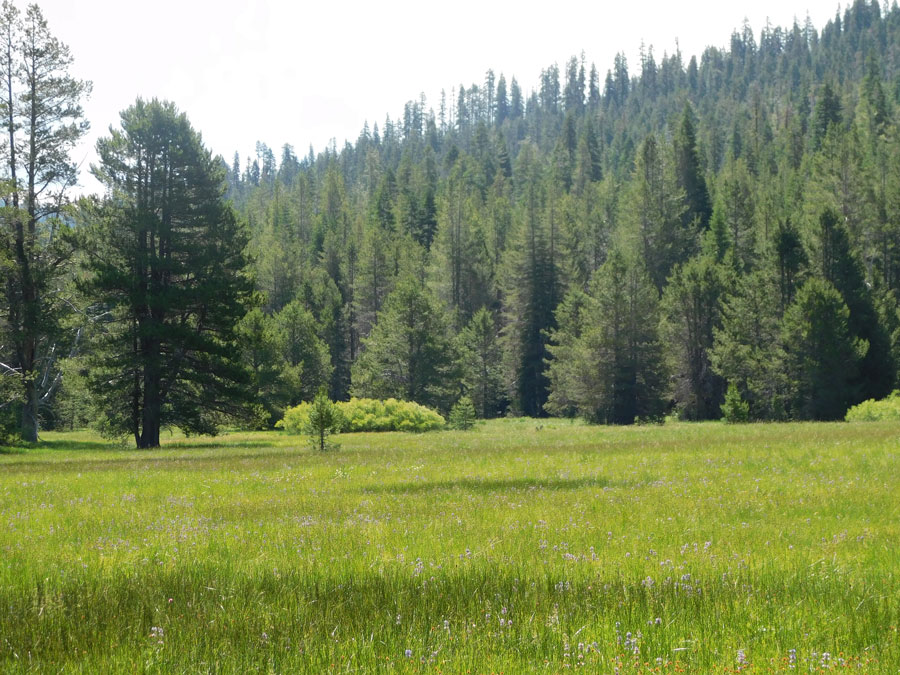
ENGLISH MEADOW, Calif. – As rising temperatures shrink wintertime snowpack across the West, people are looking to meadows like this one near Truckee, Calif., to supplement our supply of fresh, clean water. High-mountain meadows have spongy soils that soak up snowmelt and spring floodwaters, hold them in the ground until mid-summer, then release that cool, clear water into creeks and rivers for plants, fish, animals and people to use downstream.
“One way to think about meadows is that they are water in the bank,” said Neysa King, environmental resources administrator for the Nevada Irrigation District, based in Grass Valley, Calif. The water agency is three years into a project to study and restore English Meadow.
“It’s a natural feature within the watershed that benefits the… capture, storage and delivery of water,” King said.

English Meadow, she added, is “a backstop” to the district’s water system that supports 95,000 people and $98 million in agriculture in three California counties.
The restoration project is part of NID’s efforts to adapt its water system to climate change, said NID Watershed Program Assistant Cameron Townsend. The district is “exploring every option that we have to store and release water and maintain the continuity of our system,” he added. “That’s why you would look… at meadows as an option.”
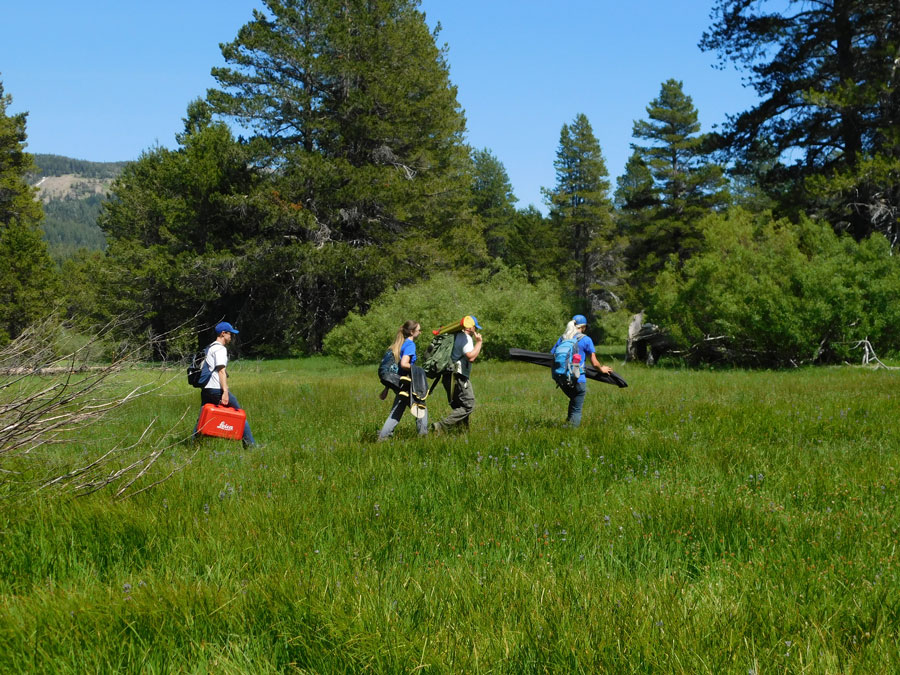
Meadow damaged by gold-era reservoir
In the Sierra Nevada foothills, natural places to store water are scarce. Shallow soils sit above granite bedrock, so groundwater storage here is scarce, unlike California’s Central Valley below. That makes English Meadow valuable.
NID and the Sierra Nevada Conservancy, a California state agency, so far have invested $240,000 into studying English Meadow to prepare for restoring it. The idea of restoring meadows that have been degraded is gaining ground all along the Sierra Nevada. So far, researchers are finding that the overall water storage capacity of high-mountain meadows is relatively small, but the larger environmental benefits are huge.
English Meadow spreads out over about 170 acres on either side of the Middle Yuba River, about 20 miles northwest of Truckee. Mountain lions hunt deer and bears feed on fish. Goshawks screech “Ki-ki-ki-ki-ki!” as they soar, migratory cranes find rest, and Pacific chorus frogs thrive. Even in summer, the water is “hurt-your-feet cold,” King laughed. Downstream, the Middle Yuba pours into Jackson Meadows Reservoir, part of NID’s water conveyance system.
The problem is, English Meadow has lost much of its ability to absorb and store water. In 1857, gold mine operators built a complex of dams across the downstream end of this broad valley to support hydraulic mining, flooding the meadow. The dam broke in 1883; the rushing water carved an unnaturally deep riverbed, and silt from the reservoir remained on the meadow’s re-exposed surface. In the early 1960s, channels cut into the meadow drained the water, leaving it dry.
The natural river-meadow system has never recovered.
River dries in the summer
In normal meadows, when a river swells with snowmelt and rain run-off, water flows up and over its banks. The flood spreads across the land and seeps into the ground. By mid-summer when the snow has melted and seasonal rains have stopped, the river’s level starts to drop. Water stored in the meadow “sponge” seeps back into the river and supplements the flow.
But in English Meadow, the Middle Yuba River quickly drains away snowmelt and rain run-off before the meadow “sponge” can soak it up. As water roars downstream, it carves out the river’s banks, making them even steeper. Silt and gravel from those banks travel to NID’s Jackson Meadows Reservoir downstream, stealing water storage space there.
By summer, this meadow dries out. Plants that thrive in year-round moisture, such as willow and alder, can’t live there anymore. Instead, plants that love drier soils move in, such as lodgepole pines. Pine trees are more flammable than meadow species, raising the risk that wildfire could damage the meadow. By mid-summer, the “sponge” has nothing left to release into the river, and parts of Middle Yuba River go dry.
“There are random pools, but they’re not connected,” King said.
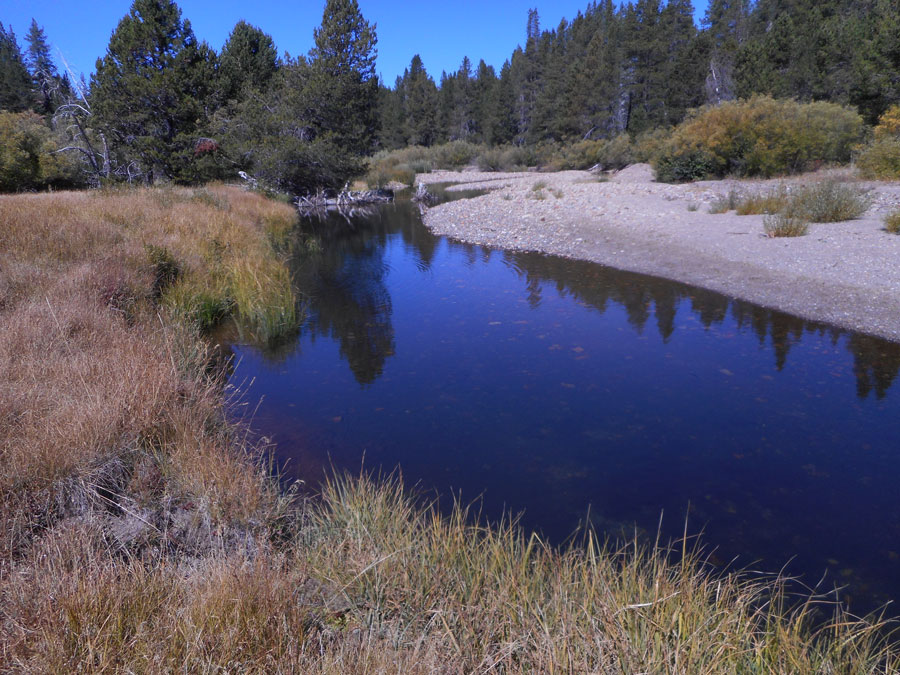
Reconnecting river and meadow restores the “sponge”
But this meadow can become a “sponge” again.
When the natural connection between the river and its floodplain within the surrounding meadow is restored, “more water stays in the system, and it stays longer,” King explained. Restoration here also would reduce sediment flowing into Jackson Meadows Reservoir.
NID still is trying to figure out how English Meadow works.
“Since 2016, researchers have measured groundwater elevations in the meadow, surface flow, water temperature, and conducted seismic surveys to estimate the depth between the topsoil and the bedrock, which make up the storage potential of the meadow aquifer,” King wrote.
Eventually, this information will lead to a project to restore the Middle Yuba River’s connection to its surrounding floodplain. Possible actions include filling in the drainage channels, timbering lodgepole pines encroaching on the meadow, grading the river banks to reduce their slope, and building structures akin to beaver dams along the river to slow down the water’s flow.
In summer 2020, NID may thin the unnaturally dense forest that surrounds the meadow, improving its resistance to fire, King added.
With these changes, floodwaters will return to the meadow each year. Each spring, they’ll drop sediment and organic material onto the meadow’s floodplain. Over time, those deposits will build up to form the spongy soil that is characteristic of a healthy, self-sustaining meadow, King explained.

One step among many to become climate-ready
Eventually, English Meadow may be able to store about 430 acre-feet of water, according to an evaluation by Dr. Kevin Cornwell and Ben Middendorf, geologists at California State University, Sacramento. Both are contractors on NID’s project.
That’s only a small percentage of the projected loss of more than 68,000 acre-feet of NID’s snowpack storage by 2050 due to climate change. So, restoring this meadow is just one of many avenues the water agency is pursuing as it adapts to a warmer climate.
Together, these steps ensure “water availability throughout the year, not just when it’s raining or while there’s still snowpack on the mountains,” Townsend said. “It’s important to have water year-round.”
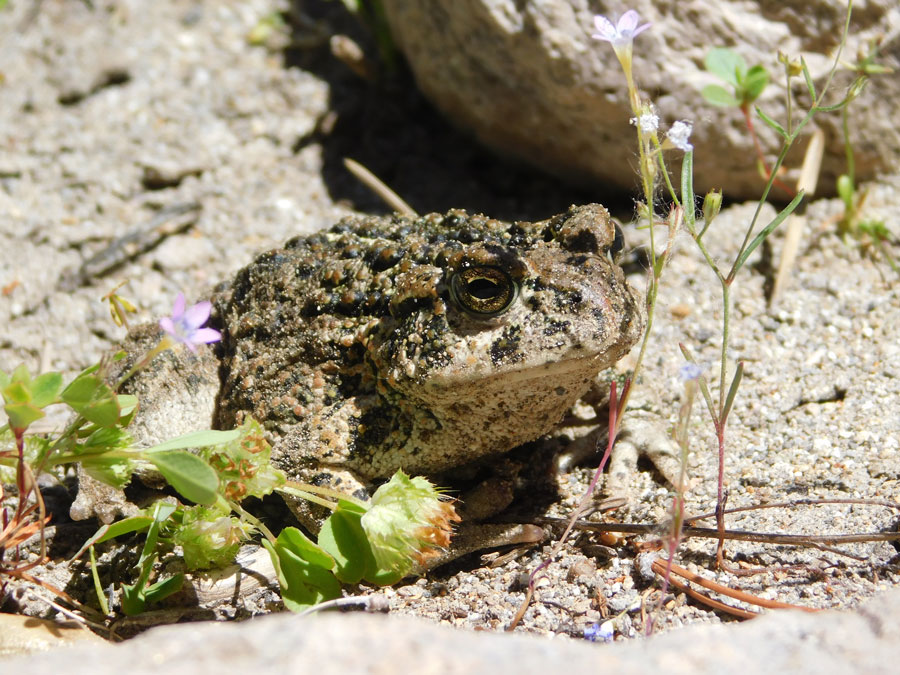
An earlier version of this story was published at YubaNet.com and in the print edition of The Union (Grass Valley, Calif.).


